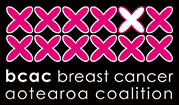Radiation therapy uses radiation to destroy cancer cells in the body. In many cases it can significantly reduce the risk of cancer recurring.
It is routinely used as a follow up treatment after a partial mastectomy (lumpectomy or wide local excision) and sometimes after a full mastectomy to help kill any cancer cells that may still be present in the surgery area.
It can be used at different times in the treatment cycle. Many women have radiation treatment immediately after surgery, but depending on your circumstances you may have it after chemotherapy. It is often used in conjunction with other treatment options and often combined with endocrine treatment.
External Beam Radiation Therapy
This is the most common type of radiation therapy. A course of radiation is usually given daily (except weekends) over a five or six week period, although faster courses are being trialled in some areas. Your treatment will be overseen by a radiation oncologist.
In some cases, a shorter three weekly treatment period may be used in which are given higher radiation doses. This is known as hypofractionation and is used in some cancer centres in New Zealand. However, this radiation method is not suitable for certain types and/or stages of breast cancer.
Treatment involves an examination of the area to be irradiated. Your oncologist will then determine how much total radiation is needed to treat the affected area. This total dose will then be delivered as a number of daily doses.
You will have a few small dots tattooed on your body to help guide the therapist to ensure the correct area is treated. The treatment sessions are usually short and will involve the therapist using a machine called a linear accelerator (pictured right) to aim a beam of high-energy radiation at the area affected by cancer. The angles used and special blocking techniques ensure that only the affected area is exposed to radiation.
Radiation therapy is most effective when it is continuous and a full course is completed, so it’s important to keep your scheduled appointments. It can seem tiring making the daily trip to your radiation therapist, so try to make appointments at times of the day that are easy for you. Having a friend or family member drive you to appointments can be helpful too.
You may be able to return to work during this phase of your treatment, but remember to get lots of rest and relaxation.
Side effects of radiation therapy
Radiation therapy is often quite easy to tolerate and the side-effects are generally limited to the affected area. Side-effects from radiation therapy tend to be cumulative, that is they become more pronounced as the course continues.
You may experience:
-
fatigue
-
the irradiated skin may become very sensitive, like a bad case of sunburn
-
lymphoedema if your lymph nodes have been irradiated.
Skin reactions are the most common side-effect. These are often worse if you:
-
have chemotherapy at the same time as radiation therapy
-
are overweight
-
have other health problems, such as diabetes
-
have sun-damaged skin
-
smoke.
You can help to protect your skin by:
-
washing with a mild soap and using a light moisturiser. Your medical team can recommend appropriate products.
-
using sunscreen on the affected area and wearing sun-protective clothing
-
protecting the affected area from damage and irritants, eg cuts, grazes, perfume, deodorant, etc
-
keeping the skin dry.
Your medical team will be able to give you more advice on skin care before, during and after radiotherapy, and will give you detailed information about other potential side-effects.
Find out more
Read the radiation therapy section of the New Zealand Guidelines on the Management of Early Breast Cancer, which outlines best practice treatment options.



